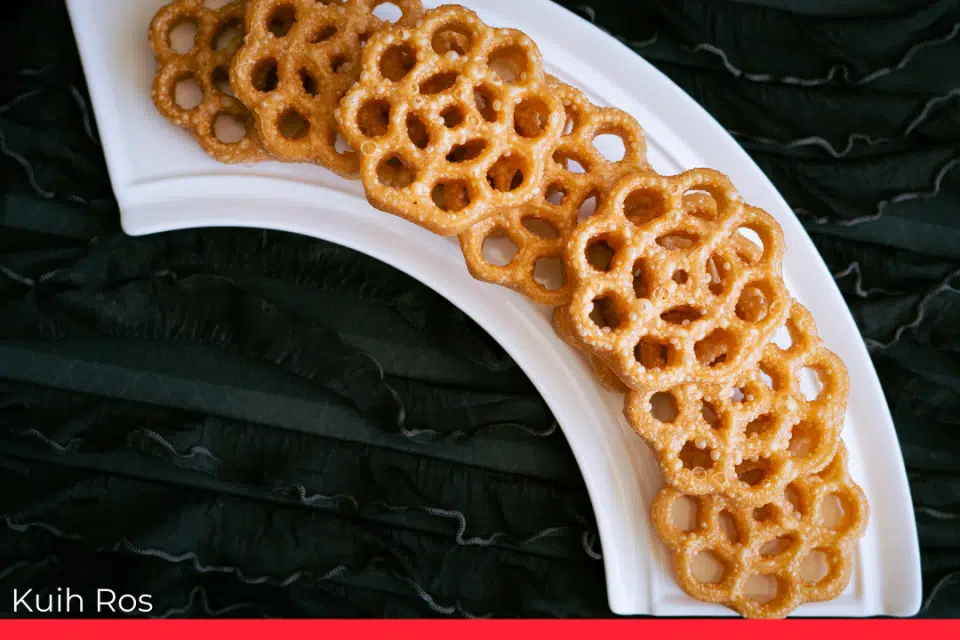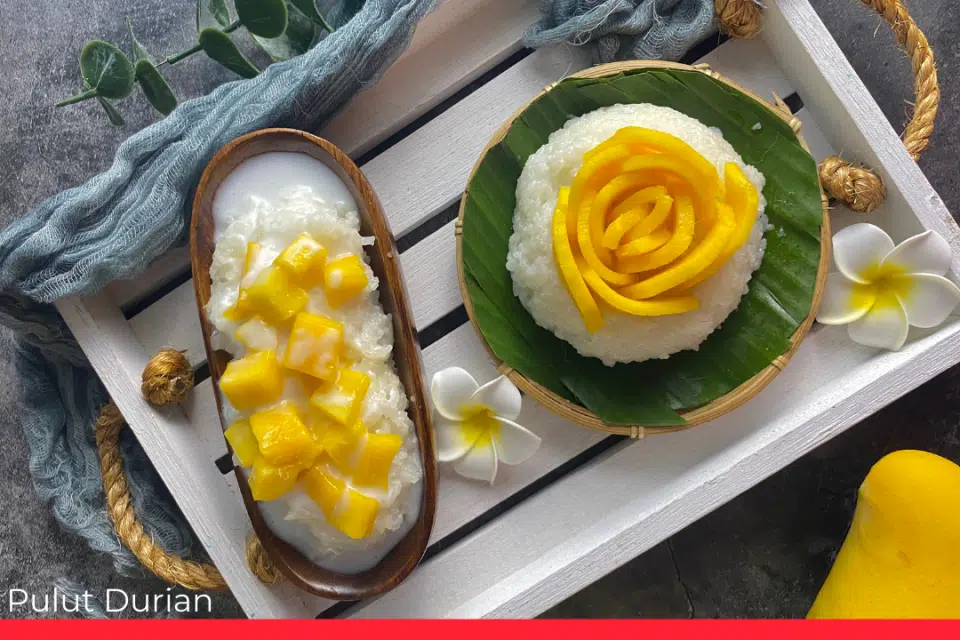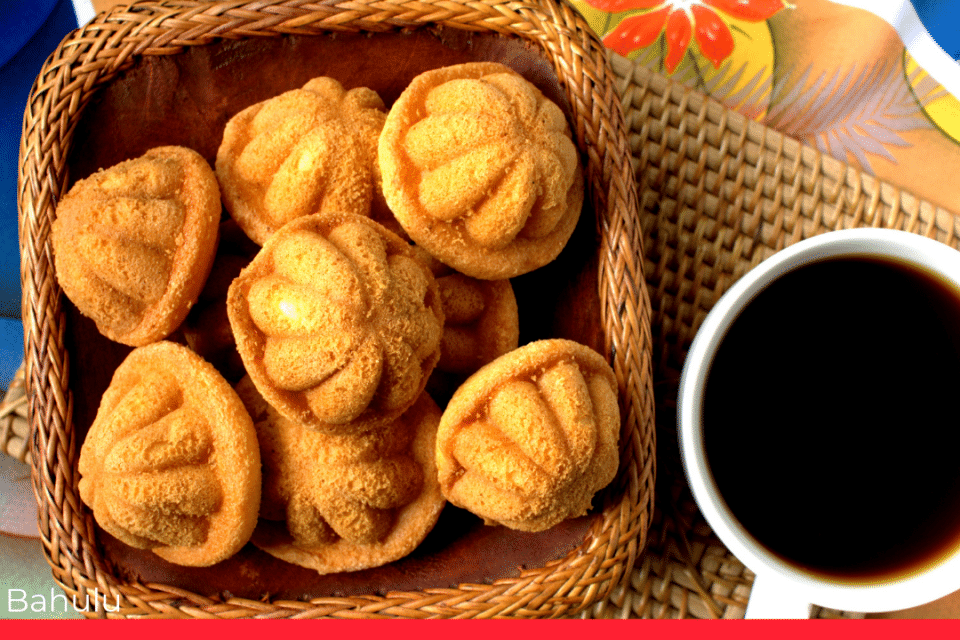Top 20 Desserts in Malaysia

The word “dessert” traces its origins to the French word desservir, which means “to clear the table.” From mousse and macarons to crème brûlée, the French pâtissiers generally specialised in sweet confections that would be served as the last course.
While the word pâtissier translates to pastry cook, pâtissiers also took on the role of the boulangèr (baker) when they were absent. In some kitchens, there were further specialisations: confiseur (candies and petit fours), glacier (frozen and cold desserts), and décorateur (show pieces and specialty cakes).
In Malaysia—a nation at the heart of Maritime Southeast Asia, home to many ethnicities, religions, and cultures—there are no hard and fast lines between “pastry” and “dessert.” With so many culinary influences, there is also no unified tradition to dictate whether desserts should be sweet or savory, or whether they should be served after the main course.
The Malay word kuih exemplifies the broad and flexible understanding that shapes the local conception of “dessert.” Kuih is distinguished from nasi (e.g., nasi lemak and nasi dagang) in being a bite-sized snack and not a full meal. It can, however, be eaten in the morning, during tea time, or after dinner.
It encompasses cookies, puddings, biscuits, and pastries. Kuih are often sweet, but there are also savory variants. Most kuih are steamed, but some are deep-fried. A kuih spread may also include cakes that have been cut into smaller, bite-size pieces, rather than being served as larger pie-shaped slices.
There are, of course, many local desserts that do fit the Euro-American idea of a prototypical dessert: cold, decadently sweet and indulgent. The difference lies in the use of local ingredients: coconut, palm sugar (gula melaka), sago, pandan leaves, etc.
Given Malaysia’s multi-ethnic population and colonial past, many of these desserts trace their origins to more distant shores.
1. Cendol

Cendol is popular across Southeast Asia. It is easily identifiable by the thick, green rice flour jelly that gives it its name. Don’t be put off by the bright green worm-shaped jelly—the color comes from all-natural pandan leaves.
Cendol is typically served with ice shavings, green jelly, gula melaka, and coconut milk. It may also be eaten with additional toppings such as sweet corn, sweetened red azuki beans and durian.
This dessert probably originated from Java, where it was once drunk as a drink (unlike the porridge-like mixture it is today) named dawet. Given the region’s tropical climate, the addition of shaved ice to dawet probably occurred much later, during the colonial era.
The advent of British reefer ships (which used refrigeration to transport perishable commodities across long distances) during the late 19th century probably provided port-based entrepreneurs and culinary innovators with the necessary ice.
Though the exact origins of cendol are unclear—it may have also been derived from Thai lot chong or Burmese mont lat saung—there is no disputing its popularity across Malaysia. It was even classified as an Intangible Heritage Object by Malaysia’s Department of National Heritage in 2013.
2. Ais Kacang

Ais kacang is popular in Malaysia, Singapore and Brunei. It is also known as ABC (an acronym for Ais Batu Campur). It bears many similarities to the Chinese bàobīng, the Japanese kakigōri, the Korean patbingsu and the Filipino halo-halo.
With its bright multicolor hue and maximalist philosophy with regard to toppings, ais kacang makes a more memorable visual impression than cendol.
It can be served with red beans, palm seeds, grass jelly, nata de coco, sweet corn, agar-agar cubes, roasted peanuts, a scoop of ice cream and cendol. This mountain of ice is usually drizzled with red rose syrup and condensed milk.
3. Kuih Lapis

While there are many types of kuih, kuih lapis is probably the most visually memorable. It gets its name from the use of alternating colored layers. There are versions with two layers (e.g., green and white), while others have a rainbow color palette.
This pleasing aesthetic is achieved by steaming each layer gradually (to ensure that the colors do not mix). Due to its rice pudding base, it has a sticky and chewy texture. It is often mildly or slightly sweet.
4. Pineapple Tarts

Pineapple tarts are a beloved Chinese New Year delicacy, but they are eaten throughout the year. They are also popular in neighboring Singapore (which has a majority Chinese population). In the Hokkien dialect, the word pineapple is pronounced very similarly to the phrase “prosperity is arriving.”
The perfect pineapple tart is golden in color, with a buttery and crumbly pastry shell.
The filling is a thick pineapple jam, which has been reduced with sugar, palm sugar, salt, star anise, cinnamon bark, and cloves. There are also open-faced pineapple tarts, where additional effort is taken to make each tart look like a dainty sunflower.
5. Mooncake

The mooncake is traditionally eaten during the Mid-Autumn Festival and is traditionally served with hot tea. Given Malaysia’s significant Chinese population, it can easily be found across the country. Needless to say that mooncakes are one of the most popular desserts in China too.
It is traditionally made with a thick crust and a filling (either red bean or lotus seed paste). Many mooncakes are baked with one or two salted duck egg yolks in the middle.
Fancy, high-end and “luxury” mooncakes are often presented to business clients and family members. Since the invention of mooncakes with taro paste, pineapple and durian, local companies have been experimenting with a wide variety of exotic and unorthodox flavors and ingredients.
6. Sago Gula Melaka

This dessert is the ABC’s and cendol’s more minimalist cousin. As its name suggests, it is made with two key ingredients: chewy sago pearls (which are actually tasteless) and a generous amount of melted gula melaka.
Thick and fragrant coconut cream (santan) seals the deal. While a dessert with three main ingredients seems simple enough, getting each element right is no mean feat.
7. Pandan Layer Cake

The pandan layer cake is so ubiquitous that it’s difficult to pinpoint who invented it and when. At some point, it seems that someone decided to reinvent the simple pandan sponge cake by drawing inspiration from the kuih lapis.
The additional layers are made with caster sugar, fresh pandan juice, coconut milk and agar-agar powder.
The latter gives the layers a jelly-like texture and consistency, while the pandan juice gives them a bright green color. (The sponge cake layer is a lighter green color). When expertly made, every layer will be of the same thickness—giving each slice a pleasing symmetry.
8. Agar-agar

Agar is often associated with petri dishes in biology labs. In Asia, agar (which is derived from algae) has been used for desserts for centuries. It has a similar (but noticeably different) chewiness to gelatin (the key ingredient in Jell-O).
Agar is white, semi-translucent and made up of 80% dietary fiber. Agar-agar makes the most of other local ingredients and flavorings (coconut, pandan, gula melaka and cendol) to produce a variety of jellies, puddings and custards.
These are usually served as kuih-sized pieces and eaten after the main meal (or as a daytime snack).
9. Dodol

One of the oldest indigenous sweets that was developed in Maritime Southeast Asia, dodol is popular in the region and on the Indian subcontinent (Sri Lanka and southern India). It is made with palm sugar, coconut milk, and rice flour. These ingredients are mixed and stirred together in a large wok for 3–5 hours.
The end result is a thick, sticky and sweet toffee-like cake that is usually dark brown in colour. This traditional delicacy is usually served during festivals such as Hari Raya Aidilfitri. Different flavors can be added for variety, like durian or banana.
10. Tau Fu Fa (Tofu Pudding)

This Chinese dessert is made with smooth, soft and silky tofu. It can be served with gula melaka, brown sugar or clear syrup. The amount of sugar added can be customized.
While it is usually served warm, it also goes down well after being chilled (especially in Malaysia’s hot and humid climate). It is usually made and sold by street vendors who sell freshly made soy milk and tau fu fa.
11. Egg Tarts

The popularity of egg tarts in Malaysia can be attributed to Cantonese migrants. Drawing inspiration from the English custard tart and the Portuguese pastel de nata (via Macau), the pastry was invented in Guangzhou and then spread throughout the Overseas Chinese diaspora via Hong Kong.
The perfect egg tart has a flaky and buttery pastry crust and a silky-smooth egg custard filling. It is usually served at dim sum restaurants and Chinese-operated bakeries.
12. Kuih Ros

Also known as Kuih Loyang, Kuih Ros gets its name from its rose-like shape. It may have been inspired by the Tamil community’s achu murukku and kue kembang goyang (a traditional flower-shaped snack).
Usually golden in color, it is made with rice flour, eggs, sugar, coconut milk, and a pinch of salt. A mold is used to create its signature rose-like appearance.
13. Roti Tisu

Roti tisu (the Malay word for tissue) is a thinner version of the traditional roti canai (a popular breakfast food). It is typically served as a towering cone and coated with sugar, kaya (coconut jam), condensed milk or even ice cream.
14. Dadar Gulung (rolled pancake)

Also known as kuih ketayap and kuih dadar, this small rolled pancake is made from rice flour and filled with grated coconut and palm sugar. Its bright green color comes from pandan leaves or daun suji. It is widely available in Malaysia, Indonesia and Brunei.
15. Bubur Cha Cha

This porridge-like dessert is similar to cendol, but it can be served warm or cold. It is believed to have been originally invented by the Betawis, Malays and Peranakans and is now widely available in Malaysia, Indonesia, Singapore and Thailand.
It is made by cooking pearled sago, sweet potatoes, banana slices, black eyed peas and yams in coconut milk. Grated coconut is sometimes added. The purple (yam), orange (sweet potato) and yellow (banana) colors give it a distinct appearance.
16. Pulut Durian (durian sticky rice)

This traditional delicacy is usually made during the durian season. It pairs glutinous rice (cooked with pandan leaves and salt) with a thick and fragrant durian sauce.
The sauce is made by boiling durian in coconut milk and water. This dish can also be served like mango sticky rice, with the glutinous rice being served alongside generous amounts of fresh durian flesh.
17. Payasam

This traditional Indian rice pudding is popular during Muslim weddings and festivals. It is made by boiling rice, vermicelli or tapioca with milk, sugar, nuts, raisins and cardamom. Some recipes substitute sago for rice and gula melaka for sugar.
18. Ang Ku Kueh (red tortoise cake)

Why mold a pastry to resemble a tortoise shell and dye it red? In Chinese culture, both are associated with good fortune and prosperity. Ang Ku Kueh are usually prepared for major festivals and presented as offerings to Chinese deities.
The soft and sticky skin is made primarily from glutinous rice flour and sweet potato. Traditional fillings include grounded peanuts and mung bean paste.
19. Pisang Goreng (fried banana fritters)

Pisang goreng can be made with ripe or not-too-ripe bananas, so some are sweeter than others. The bananas are peeled, covered in batter (a mixture of rice flour, corn starch, baking powder, sugar and salt), and then deep-fried to perfection. Once fried, it should be golden in color.
20. Bahulu

This traditional Malay kuih resembles the madeleine. While these small sponge cakes can be made with different molds, the most popular ones are made using button-shaped molds.
They are served on special occasions and eaten throughout the year. They are made with eggs, sugar, vanilla extract, flour and baking soda.
In recent years, many young and trendy Malaysians have been drawn to imported desserts. From bubble tea to mochi, from premium ice cream, Instagram-worthy pastries and confectionaries to luxury chocolates and yogurt bars, global and regional desserts are becoming more and more common.
Meanwhile, a new generation of entrepreneurs are adopting and embracing new business models to sell time-honoured delights.
While the traditional Malaysian desserts flourished by appealing to child, farmer, laborer, housewife, and white-collar worker alike, the new wave of desserts seem to cater more specifically to the hip, the trendy and the urban.
There is, however, no bitter war between old and new, between these familiar localized delights and the novel imported concoctions. Perhaps all this newness even fuels a nostalgic desire for the rose-tinted past—one imagined to be simpler, more unhurried, more down to earth.
The war is more about the narcissism of small differences and regional food rivalries—evident in the general Malaysian outrage over CNN’s 2018 claim that Singapore’s take on cendol was “especially tempting.” The war of words might really be a signifier of something deeper, but a bowl of the ‘best’ cendol is clearly worth fighting for.
Before you go, check our a round-up of Malaysia’s most popular (savory) foods.

Related: Most Popular Malaysian Fruits

